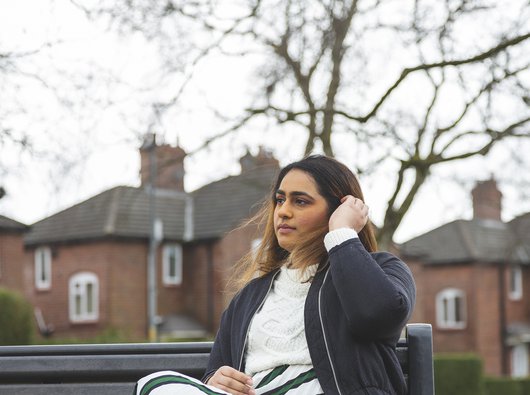Treatment for childhood leukaemia
The treatment your child has will depend on the specific type of leukaemia and their overall health.
Treatment planning
Throughout your child’s treatment, your hospital team will discuss the treatment options with you and ask for your opinion and preferences.
Young adults aged 16 and over can make their own treatment decisions, though most will want to involve their family.
The doctor will recommend a treatment plan for your child and talk to you about what it will involve. The treatment your child has will depend on the exact type of leukaemia they have, as well as on the results of tests they have before treatment and as it progresses.
It’s very important that your child starts treatment soon after being diagnosed, because childhood leukaemia can be a fast-growing disease.
Your child’s treatment plan may need to change along the way. If this happens, your healthcare team will explain why, and talk to you about the different options.
To find out more about treatments for different types of childhood leukaemia, see our information about childhood acute lymphoblastic leukaemia (ALL) and about childhood acute myeloid leukaemia (AML).
Information for young adults
For young adults with leukaemia, lymphoma or any blood cancer type.
Your guide to treatment, side effects, coping with emotions, friends and work or study.

Clinical trials for childhood leukaemia
Many children in the UK who are diagnosed with cancer are treated through a clinical trial, where treatment options are compared to see which brings the best results.
Because cancer is so rare in children, clinical trials are really important for testing new treatments and improving current ones, so more children are cured and long-term side effects are reduced.
If there’s a clinical trial available that’s suitable for your child, your doctor may ask you, (or your child, if they’re over 15), to consider taking part. In a trial, your child’s safety and well-being are always the priority. They’ll be very closely monitored during and after the trial, and can withdraw at any time.
Taking part in a trial does come with uncertainties and risks, and there’s no guarantee the treatment being tested will be better than the standard recommended treatment. If you don’t want your child to be in a trial, or there isn’t a suitable trial available, your child will be offered the best treatment available that’s appropriate for them, based on their test results and general health.
Your child’s healthcare team can give you more information about clinical trials for childhood leukaemia. You can also find out more about clinical trials from an NHS website called Be Part of Research.
Types of treatment for childhood leukaemia
Your child will have the treatment that’s right for them – the treatment will be different depending on which type of leukaemia they have and their individual needs.
Chemotherapy is the main treatment for children with leukaemia.
Chemotherapy
Chemotherapy drugs are anti-cancer drugs. They are poisonous to cells, interfering with cell division, the process where cells divide to make new cells. In particular, they are good at killing cells that divide quickly, such as cancer cells, but they also affect cells in the hair and the gut. This is what causes unwanted side effects like hair loss and vomiting.
Chemotherapy drugs can be given in a number of ways:
- by injecting them into the bloodstream through a vein (intravenous infusion or drip)
- by injection into the fluid around the spine (intrathecal injection)
- as a liquid, tablet or capsule (oral medication).
How chemotherapy is given (central lines)
Some drugs are given into large veins (intravenously). To give them safely and avoid repeated needles bring inserted, a central venous line is usually inserted. This involves a thin flexible plastic tube being inserted into a large blood vessel, which can then stay in place throughout treatment.
The line is put in under general anaesthetic and your child shouldn’t feel any discomfort, although some children find the idea of them difficult at first.
The main types of central line are:
- Hickman line: This is inserted into a large vein, usually near the collar bone. The tube is tunnelled under the skin and comes out in the chest.
- Portacath: This is like a Hickman line, but has a small port or compartment at the end, which stays under the skin in the chest.
- PICC line (peripherally inserted central catheter line): This is usually inserted into a large vein in your child’s arm.
Central lines can be used to give drugs, fluids and blood products, and also for taking blood samples. If you notice any problems such as the line getting blocked, infected or splitting, tell your healthcare team so they can help.
Hugo's treatment for leukaemia
"I know that one of the projects Blood Cancer UK fund ensured that Hugo didn’t have to endure any more chemotherapy than absolutely necessary. I’m so grateful for that. "
Read Lisa's story about Hugo's treatment and recovery

Stem cell transplants
Most children with leukaemia will respond well to chemotherapy. In rare cases, a child may need a stem cell transplant (sometimes called a bone marrow transplant).
A stem cell transplant involves large doses of chemotherapy and sometimes radiotherapy. The aim is to destroy existing stem cells (which produce new blood cells) and introduce new, healthy stem cells.
Healthy stem cells are collected from the blood or bone marrow of a matched donor – someone who has been tested to make sure their cells are compatible with your child’s. The donor may be a brother or sister but can be unrelated. The cells are given to your child through their central venous line (intravenous transfusion). There’s no need for surgery.
Stem cell transplants can only be done if there’s a matched donor available. It’s an intensive treatment which aims for a cure, but it can bring side effects. Your child’s consultant will give you detailed advice about the risks and benefits of a transplant.
We have more information about stem cell transplants.
Going into remission
If your child responds well to treatment and few or no leukaemia cells can be seen in their blood or bone marrow, this is called remission.
Children will still need further treatment after first going into remission. The amount and strength of treatment depends on how well the treatment has worked so far, and the type of leukaemia your child has.
Having a relapse
Sometimes leukaemia can come back after remission. This is called relapse. This can happen either during treatment or after treatment has finished.
Although relapse is often harder to treat, there are still effective treatment options. Your child is likely to have further courses of chemotherapy. Sometimes this will be followed by a stem cell transplant. Your child’s consultant will discuss the treatment options with you in detail if your child has a relapse.
After treatment
When treatment has finished your child will continue to come to the hospital for regular check-ups.
Your child may have tests at these check-ups but this will depend on the type of leukaemia they’ve had.
See our information about childhood acute lymphoblastic leukaemia (ALL) or childhood acute myeloid leukaemia (AML) for more information.
Telling your GP and other healthcare professionals
It’s important for your child’s GP to know about the treatment they’ve had for leukaemia, and the hospital will inform them about it.
If your child becomes ill later in life, it’s important to make sure that doctors are aware of their medical history. Even if the condition has nothing to do with leukaemia, the diagnosis and choice of treatment may be more difficult if doctors don’t have your child’s full medical history.
Your hospital team should give you an end of treatment summary when your child finishes their treatment and will offer access to a long-term follow-up service.

Talk to other people affected by blood cancer
Hear from and connect with people who understand.
